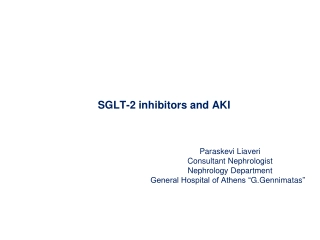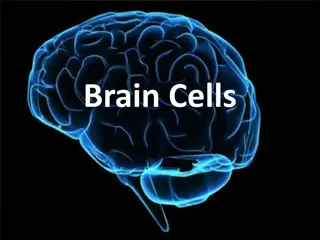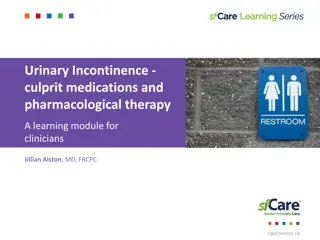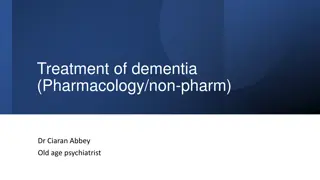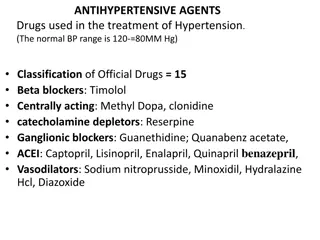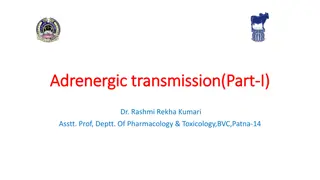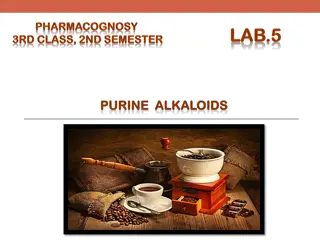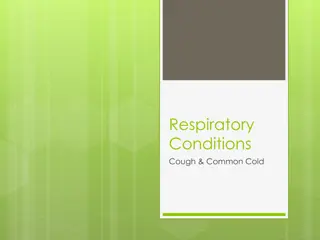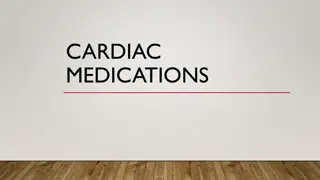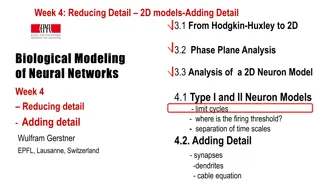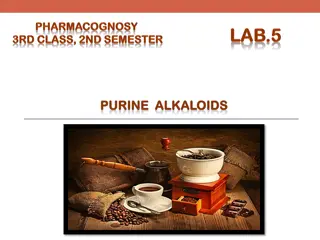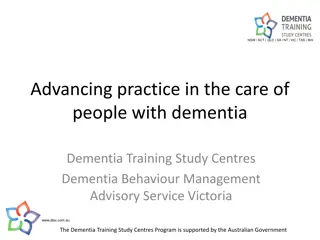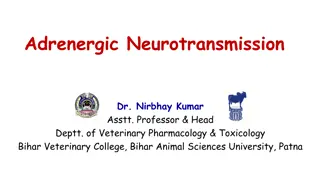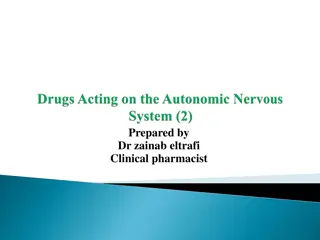Understanding Adrenergic Neuron Blockers: Mechanisms and Pharmacological Effects
Explore the mechanisms of action of adrenergic neuron blockers and classify adrenergic receptor blockers into selective and non-selective categories. Delve into the pharmacokinetic aspects and pharmacodynamic effects of these blockers, such as false transmitter formation, store depletion, release inhibition, and presynaptic receptor stimulation. Learn about key drugs like Clonidine, Methyldopa, Reserpine, and Guanethidine and their roles in hypertension, glaucoma, and sympathetic outflow modulation.
Uploaded on Sep 14, 2024 | 0 Views
Download Presentation

Please find below an Image/Link to download the presentation.
The content on the website is provided AS IS for your information and personal use only. It may not be sold, licensed, or shared on other websites without obtaining consent from the author. Download presentation by click this link. If you encounter any issues during the download, it is possible that the publisher has removed the file from their server.
E N D
Presentation Transcript
Sympatholytic Drugs Adrenergic neuron blockers Adrenergic receptor blockers
Henry Hallett Dale3.jpg Adrenaline reversal Sir Henry Dale, awarded the Nobel prize in 1936
ILOS Outline the mechanisms of action of adrenergic neuron blockers Classify -receptor blockers into selective & non- selective Study in detail the pharmacokinetic aspects & pharmacodynamic effects of adrenergic blockers
mechanisms of Adrenergic blockers -Methyl dopa 1-Formation of False Transmitters
mechanisms of Adrenergic blockers Reserpine 2-Depletion of Storage sites
mechanisms of Adrenergic blockers 3-Inhibition of release Guanethidine
mechanisms of Adrenergic blockers 4-Stimulation of presynaptic 2receptors Clonidine and -Methyldopa
-Methyldopa Forms false transmitter that is released instead of NE Acts centrally as 2receptor agonist to inhibit NE release Drug of choice in the treatment of hypertension in pregnancy (pre- eclampsia - gestational hypertension)
Clonidine Acts directly as 2receptor agonist to inhibit NE release Apraclonidine is used in open angle glaucoma as eye drops. acts by decreasing aqueous humor formation Suppresses sympathetic outflow activity from the brain Little Used as Antihypertensive agent due to rebound hypertension upon abrupt withdrawal
Adrenergic neuron blockers Synopsis Synopsis Stimulation of presynaptic - receptors False Depletion of stores Inhibition of release neurotransmit ter formation Clonidine -Methyldopa Reserpine Guanethidine -Methyldopa
Adrenergic receptor blockers Adrenergic receptor blockers They block sympathetic actions by antagonizing:- -receptor -receptor
Non Non- -Selective Selective - - Adrenoceptor Adrenoceptor Antagonists Antagonists Phenoxybenzamine: Irreversible blocks both 1and 2 receptors Long-acting (24 hrs).
Non Non- -Selective Selective - - Adrenoceptor Adrenoceptor Antagonists Antagonists Phentolamine Reversible blocking of 1 & 2 receptors Short acting (4 hrs)
Both drugs cause: Postural hypotension Decrease peripheral vascular resistance Increase cardiac output ( 2 block)
angina arrhythmia Both drugs can precipitate arrhythmias and angina and are contra-indicated in patients with decreased coronary perfusion Reflex tachycardia
Therapeutic Uses: Therapeutic Uses: Pheochromocytoma: Before surgical removal to protect against hypertensive crisis
Phentolamine Dermal necrosis following extravasation of NA Reversal of local anasthesia Hypertensive crisis following abrupt withdrawal of clonidine or ingestion of tyramine in patients on MAO inhibitors Phenoxybenzamine: Raynaud disease & frostbite
ADRS Postural hypotension Nasal stuffiness or congestion Vertigo & drowsiness
ADRS Tachycardia headache Headache Male sexual dysfunction (inhibits ejaculation)
Selective Selective 1- Antagonists Antagonists Prazosin & doxazosin Prazosin (short half-life) Doxazosin, terazosin (long half life )
Selective Selective 1- Antagonists Antagonists 1 antagonists cause:- Vasodilatation due to relaxation of arterial and venous smooth muscles Fall in arterial pressure with less tachycardia than with non- selective blockers
Therapeutic Uses: Benign Prostatic hyperplasia
Therapeutic Uses: Treatment of hypertension with prostate enlargement
Therapeutic Uses: Reynaud's disease (vasospasm) (Reynaud's disease causes some areas of the body such as fingers and toes to feel numb and cold in response to cold temperatures or stress)
Tamsulosin (Uroselective) Selective 1A antagonist 1A receptors present in prostate Tamsulosin is used in treatment of benign prostatic hypertrophy (BPH) BPH
Tamsulosin (Uroselective) Selective 1A antagonist Tamsulosin produces: relaxation of smooth muscles of bladder neck & prostate improves urine flow Has minimal effect on blood pressure
2 2- -selective antagonists selective antagonists Yohimbine Used as aphrodisiac in the treatment of erectile dysfunction Increase nitric oxide release in the corpus cavernosum thus producing vasodilator action and contributing to the erectile process


